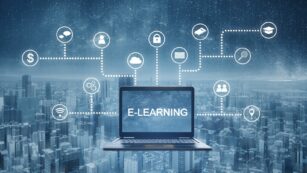In the ever-evolving landscape of education, technology has emerged as a pivotal force, reshaping how knowledge is accessed, absorbed, and applied. Among its myriad impacts, one positive effect stands out: the democratization of education. This transformative shift has broken down traditional barriers, making learning more accessible to students across the globe.
What Is One Positive Effect Technology Has Had On Education?
Technology’s influence on education is both profound and multifaceted, but one of the most significant positive effects is its ability to personalize and democratize learning experiences. As technology becomes increasingly integrated into educational frameworks, it has disrupted traditional teaching methodologies and barriers, offering a more accessible and flexible learning environment for all students.
Breaking Geographical Barriers
 One of the standout benefits of technology in education is its role in breaking geographical barriers. Before the advent of online learning platforms and digital resources, access to quality education was often limited by one’s physical location. Today, technology enables students from remote or underserved regions to access the same quality of education as those in more affluent areas. For instance, online courses and virtual classrooms allow students to attend lectures, participate in discussions, and access educational materials from anywhere in the world, as long as they have an internet connection. AI apps further enhance remote learning by using AI to eliminate background noise during virtual lectures or study sessions, ensuring clear communication and taking notes automatically. This global classroom concept not only expands access but also fosters a more inclusive learning community by bringing together diverse perspectives.
One of the standout benefits of technology in education is its role in breaking geographical barriers. Before the advent of online learning platforms and digital resources, access to quality education was often limited by one’s physical location. Today, technology enables students from remote or underserved regions to access the same quality of education as those in more affluent areas. For instance, online courses and virtual classrooms allow students to attend lectures, participate in discussions, and access educational materials from anywhere in the world, as long as they have an internet connection. AI apps further enhance remote learning by using AI to eliminate background noise during virtual lectures or study sessions, ensuring clear communication and taking notes automatically. This global classroom concept not only expands access but also fosters a more inclusive learning community by bringing together diverse perspectives.
Accommodating Different Learning Styles
 Technology’s adaptability plays a crucial role in catering to different learning styles, making education more inclusive and effective. Traditional one-size-fits-all teaching approaches often fail to meet the needs of every student, but technology can bridge this gap. Tools such as interactive apps, digital textbooks, and educational videos cater to visual, auditory, and kinesthetic learners by providing content in various formats. Personalized learning platforms leverage algorithms to adjust the difficulty level of tasks based on individual performance, ensuring that every student can learn at their own pace and in a way that best suits their learning style. This tailored approach not only improves engagement but also boosts comprehension and retention rates.
Technology’s adaptability plays a crucial role in catering to different learning styles, making education more inclusive and effective. Traditional one-size-fits-all teaching approaches often fail to meet the needs of every student, but technology can bridge this gap. Tools such as interactive apps, digital textbooks, and educational videos cater to visual, auditory, and kinesthetic learners by providing content in various formats. Personalized learning platforms leverage algorithms to adjust the difficulty level of tasks based on individual performance, ensuring that every student can learn at their own pace and in a way that best suits their learning style. This tailored approach not only improves engagement but also boosts comprehension and retention rates.
Technology’s most positive effect on education lies in its ability to make learning accessible and personalized. By breaking geographical barriers and accommodating different learning styles, technology is not just changing how we learn but also who gets to learn, paving the way for a more inclusive and equitable global education landscape.
Personalized Learning Experiences
One of the standout benefits technology offers in education is the creation of personalized learning experiences. By leveraging data analytics and artificial intelligence, educational platforms can tailor learning paths to match the individual pace, interests, and learning style of each student. This approach not only improves engagement but also enhances comprehension and retention of information. As a result, students gain a more profound understanding of the material, addressing the question, “What is one positive effect technology has had on education?” Through personalized learning experiences, technology ensures education is more accessible and effective for everyone.
Collaboration and Communication
 One positive effect technology has had on education is enhancing collaboration and communication. Through digital platforms and tools, students and educators can connect effortlessly, transcending geographical boundaries. Technology facilitates group projects, discussions, and peer feedback online, allowing for continuous interaction. It enables synchronous and asynchronous communication, ensuring that learning and collaboration can occur at any time and from anywhere. This advancement in technology fosters a sense of community among learners and teachers, making education more interactive and inclusive.
One positive effect technology has had on education is enhancing collaboration and communication. Through digital platforms and tools, students and educators can connect effortlessly, transcending geographical boundaries. Technology facilitates group projects, discussions, and peer feedback online, allowing for continuous interaction. It enables synchronous and asynchronous communication, ensuring that learning and collaboration can occur at any time and from anywhere. This advancement in technology fosters a sense of community among learners and teachers, making education more interactive and inclusive.
Diverse Teaching Tools
Technology introduces a range of diverse teaching tools to the educational sector, significantly enhancing learning environments. Integrating digital platforms, multimedia presentations, and interactive simulations, it addresses various learning preferences, accommodating auditory, visual, and kinesthetic learners alike. These tools make lessons more engaging, assisting in better comprehension and retention of knowledge. Moreover, access to a vast array of resources, including online libraries, educational apps, and video tutorials, supplements traditional teaching methodologies. Consequently, educators can tailor instruction to meet the unique needs of each student, fostering a more personalized learning experience. This diversity in teaching tools underscores one positive effect technology has had on education, promoting an inclusive, flexible, and customized approach to learning.

